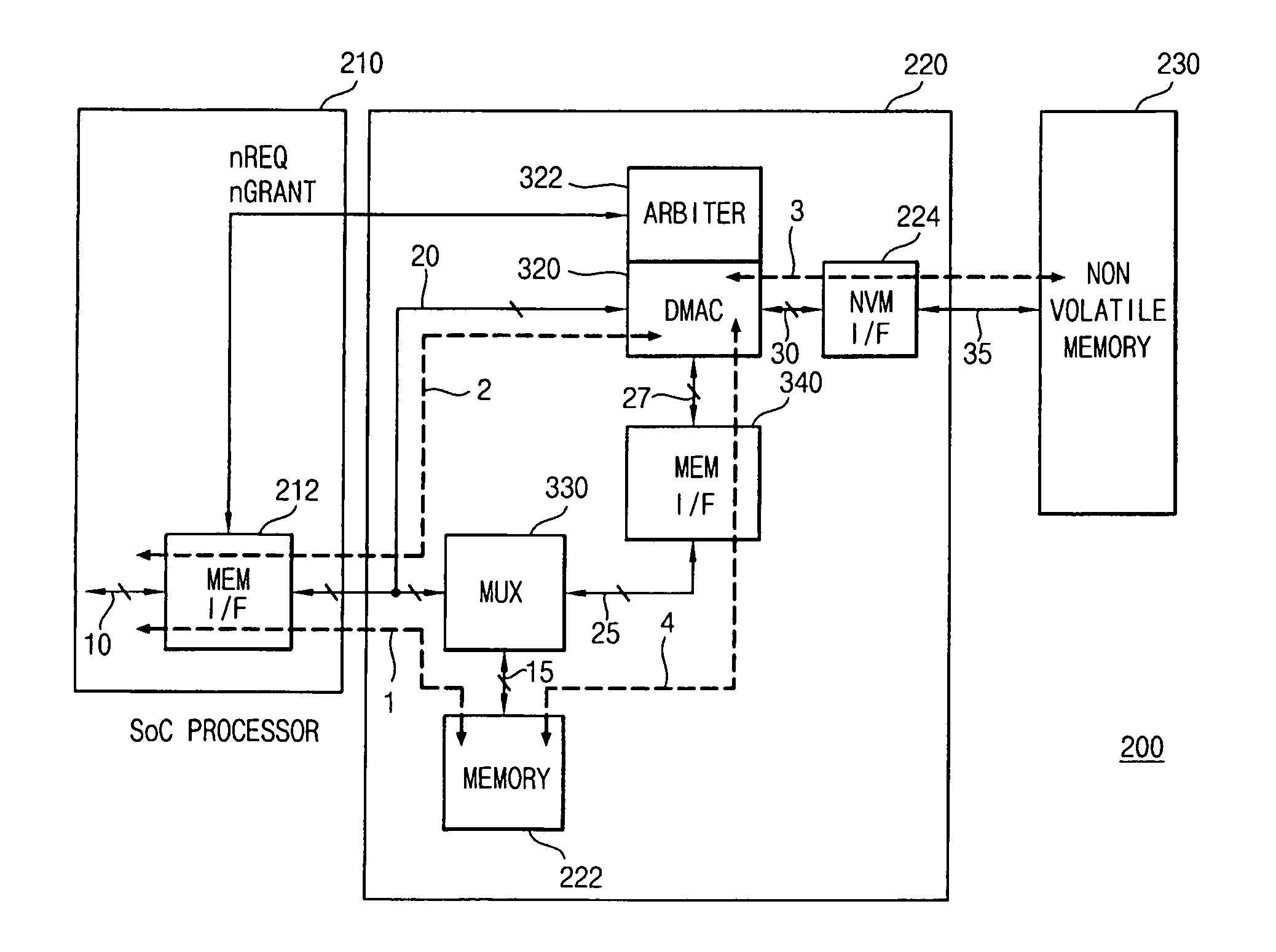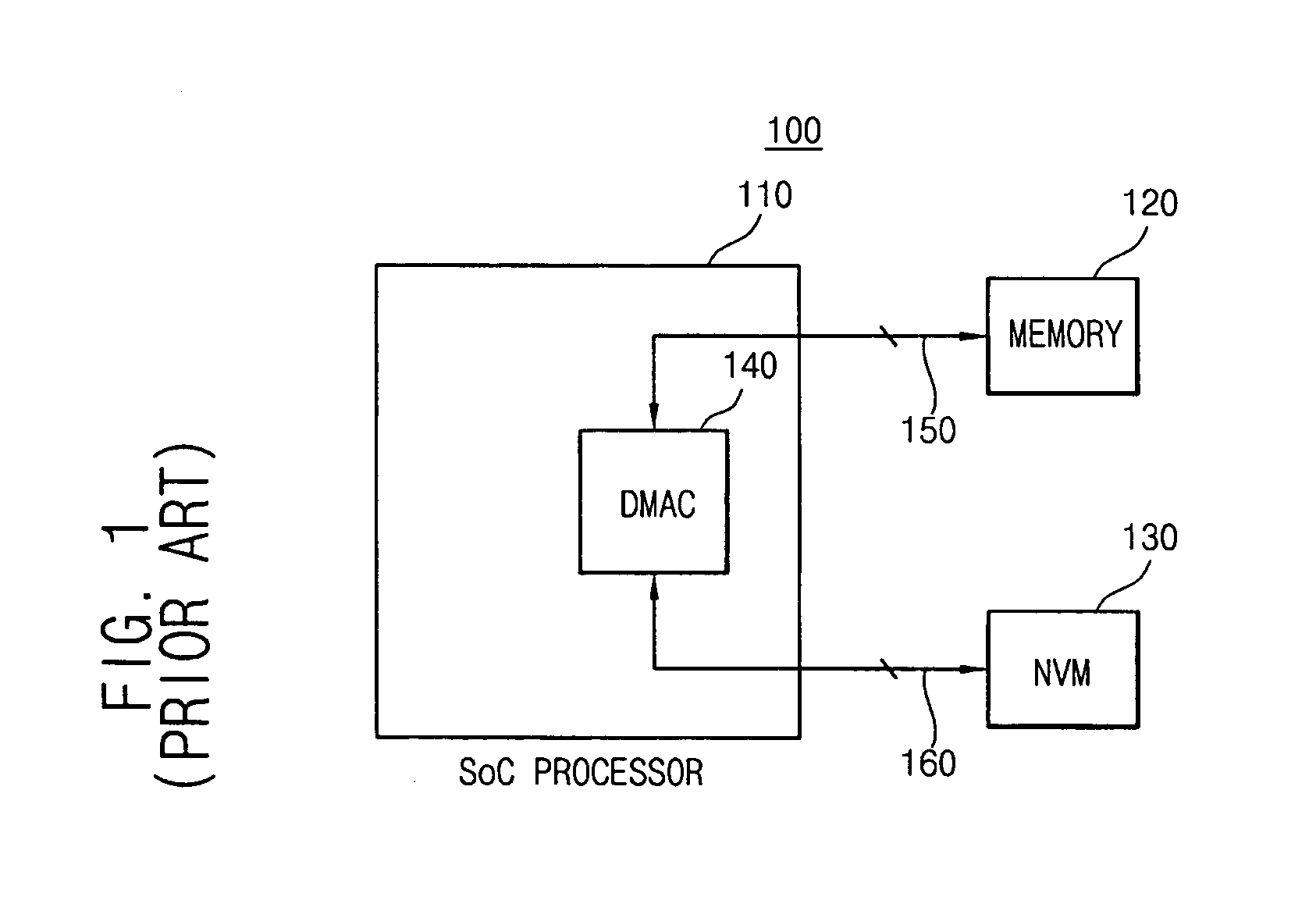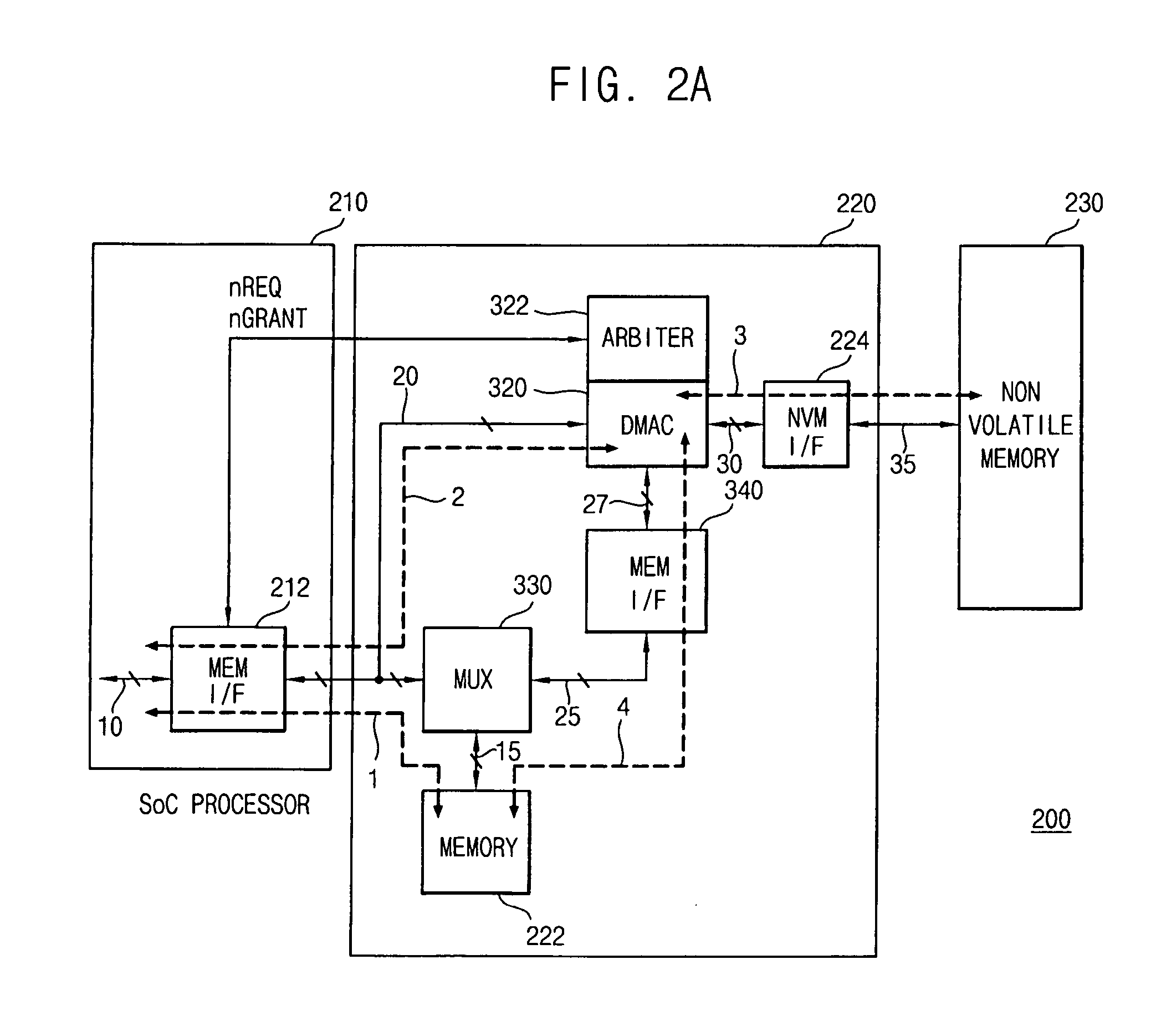Microprocessor system with memory device including a DMAC, and a bus for DMA transfer of data between memory devices
a microprocessor and memory device technology, applied in digital storage, instruments, climate sustainability, etc., can solve the problems of inability to transfer data at a speed in excess of the processing speed of the cpu, processors are unavailable during such a large amount of data transfer, etc., to achieve the effect of increasing performance and reducing power consumption
- Summary
- Abstract
- Description
- Claims
- Application Information
AI Technical Summary
Benefits of technology
Problems solved by technology
Method used
Image
Examples
Embodiment Construction
[0029]FIG. 2A is a circuit block diagram illustrating a processor system 200 including a memory device 220 having an internal (memory) bus 25, switchably connected (by a bus multiplexer 330) between a system memory (RAM) 222 and a direct memory access controller (DMAC 320), according to an embodiment of the present invention. The processor system 200 generally includes a “system-on-a-chip (SoC) processor 210, a memory device 220 (including a DMAC 320 with an Arbiter 322, and a bus multiplexer MUX 330), and an (external) nonvolatile memory (NVM) 230. The memory 222 may include synchronous DRAM cells or SRAM cells.
[0030]FIG. 2A additionally depicts, by dotted lines, the data routes (data transmission paths 1, 2, 3, &4) by which data may be transmitted to, from, and between the processor 210, the DMAC 320, the memory RAM 222 and the external nonvolatile memory NVM 230.
[0031] As depicted in FIG. 2A, data may be transmitted (e.g., written from the processor 210 into the system memory 2...
PUM
 Login to View More
Login to View More Abstract
Description
Claims
Application Information
 Login to View More
Login to View More - R&D
- Intellectual Property
- Life Sciences
- Materials
- Tech Scout
- Unparalleled Data Quality
- Higher Quality Content
- 60% Fewer Hallucinations
Browse by: Latest US Patents, China's latest patents, Technical Efficacy Thesaurus, Application Domain, Technology Topic, Popular Technical Reports.
© 2025 PatSnap. All rights reserved.Legal|Privacy policy|Modern Slavery Act Transparency Statement|Sitemap|About US| Contact US: help@patsnap.com



